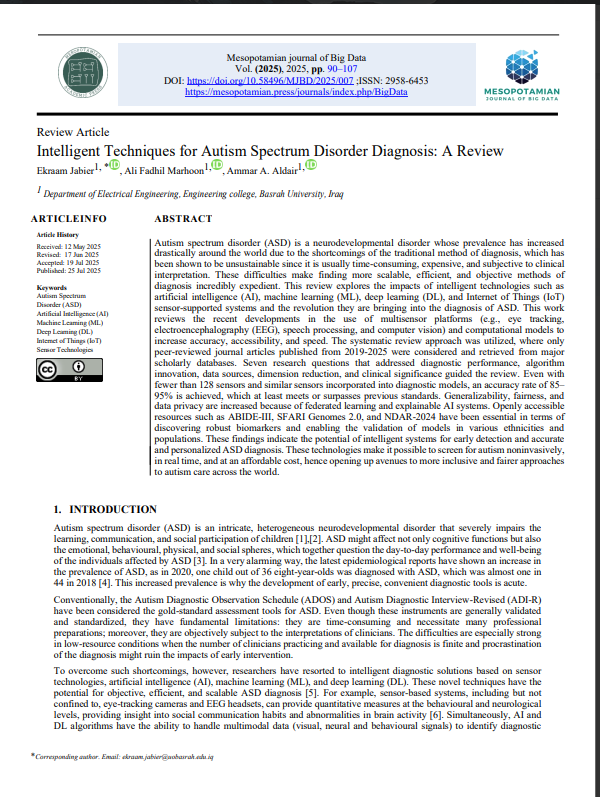Intelligent Techniques for Autism Spectrum Disorder Diagnosis: A Review
Main Article Content
Abstract
Autism spectrum disorder (ASD) is a neurodevelopmental disorder whose prevalence has increased drastically around the world due to the shortcomings of the traditional method of diagnosis, which has been shown to be unsustainable since it is usually time-consuming, expensive, and subjective to clinical interpretation. These difficulties make finding more scalable, efficient, and objective methods of diagnosis incredibly expedient. This review explores the impacts of intelligent technologies such as artificial intelligence (AI), machine learning (ML), deep learning (DL), and Internet of Things (IoT) sensor-supported systems and the revolution they are bringing into the diagnosis of ASD. This work reviews the recent developments in the use of multisensor platforms (e.g., eye tracking, electroencephalography (EEG), speech processing, and computer vision) and computational models to increase accuracy, accessibility, and speed. The systematic review approach was utilized, where only peer-reviewed journal articles published from 2019-2025 were considered and retrieved from major scholarly databases. Seven research questions that addressed diagnostic performance, algorithm innovation, data sources, dimension reduction, and clinical significance guided the review. Even with fewer than 128 sensors and similar sensors incorporated into diagnostic models, an accuracy rate of 85–95% is achieved, which at least meets or surpasses previous standards. Generalizability, fairness, and data privacy are increased because of federated learning and explainable AI systems. Openly accessible resources such as ABIDE-III, SFARI Genomes 2.0, and NDAR-2024 have been essential in terms of discovering robust biomarkers and enabling the validation of models in various ethnicities and populations. These findings indicate the potential of intelligent systems for early detection and accurate and personalized ASD diagnosis. These technologies make it possible to screen for autism noninvasively, in real time, and at an affordable cost, hence opening up avenues to more inclusive and fairer approaches to autism care across the world.
Article Details
Issue
Section

This work is licensed under a Creative Commons Attribution 4.0 International License.
